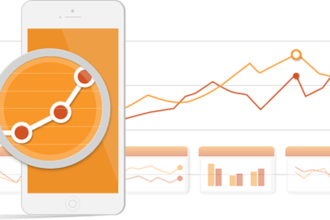Count Basie, Louis Armstrong, and Duke Ellington were jazz greats. And then came MilesDavis. What can we learn from the jazz legend musician, Miles Davis, about enterprise performance management?
Let’s start with Davis’ second quintet from 1964-1968 which consisted of Davis on trumpet, Herbie Hancock on piano, Ron Carter on double bass, Tony Williams on drums, and Wayne Shorter on tenor saxophone. Each of these talented musicians continued on with notable individual music careers. But what was exceptional when they played together was an observation Davis made when he said, “We weren’t playing chords anymore.” Initially the quintet played structured music following the notes. But then they evolved and connected as a team and played improvised music spontaneously. They could think like one without being inhibited. They knew they were free to go anywhere with their sound, and the others would follow.
How often have you enjoyed a shared experience like that? What the five of them were able to do is to play solo but complement each other to create the sound of a quintet. My vision is that is how an integrated enterprise performance management team of project leaders should …
Count Basie, Louis Armstrong, and Duke Ellington were jazz greats. And then came Miles Davis. What can we learn from the jazz legend musician, Miles Davis, about enterprise performance management?
Let’s start with Davis’ second quintet from 1964-1968 which consisted of Davis on trumpet, Herbie Hancock on piano, Ron Carter on double bass, Tony Williams on drums, and Wayne Shorter on tenor saxophone. Each of these talented musicians continued on with notable individual music careers. But what was exceptional when they played together was an observation Davis made when he said, “We weren’t playing chords anymore.” Initially the quintet played structured music following the notes. But then they evolved and connected as a team and played improvised music spontaneously. They could think like one without being inhibited. They knew they were free to go anywhere with their sound, and the others would follow.
How often have you enjoyed a shared experience like that? What the five of them were able to do is to play solo but complement each other to create the sound of a quintet. My vision is that is how an integrated enterprise performance management team of project leaders should play together. Imagine each project leader taking charge of these foundational methodologies:
Strategy mapping, performance measures (with a balanced scorecard and cascaded dashboards), and the resulting projects and initiatives portfolio. These link operations to the executive team’s strategy and align employee behavior and priorities with the strategy.
Demand Forecasting. Forecasting is arguably the independent variable from which all other plans and actions are dependent variables. The purpose is to reduce uncertainty. And as a side bonus, the outcome facilitates shifting to performance-based budgeting and driver-based rolling financial forecasts.
Customer intelligence, economic value, and profitability analysis. These answer the questions of which type of customer is attractive to retain, to grow, to win back, and to acquire? And which types are not? And, one step further, how much should be spent on each customer micro-segment to gain optimal profit lift? Activity based costing is an important element.
Risk management. To properly balance the organization’s risk appetite with its risk exposure and to optimally fund risk mitigation projects.
Business analytics. To ask questions and solve problems that lead to better decisions with exploratory and confirmatory analysis.
Each of these pursuits can stand on their own as a component to manage and improve an organization’s performance. But as with Miles Davis’ “Second Great Quintet,” the integration of them, with business anaytics embedded, produces a sound that is much larger than the sum of the parts. When they are synchronized, you “aren’t playing chords anymore.” Volatility is the new normal, so the ability to continuously improvise and synchronize in an agile way can fulfill the complete vision for enterprise performance management.






